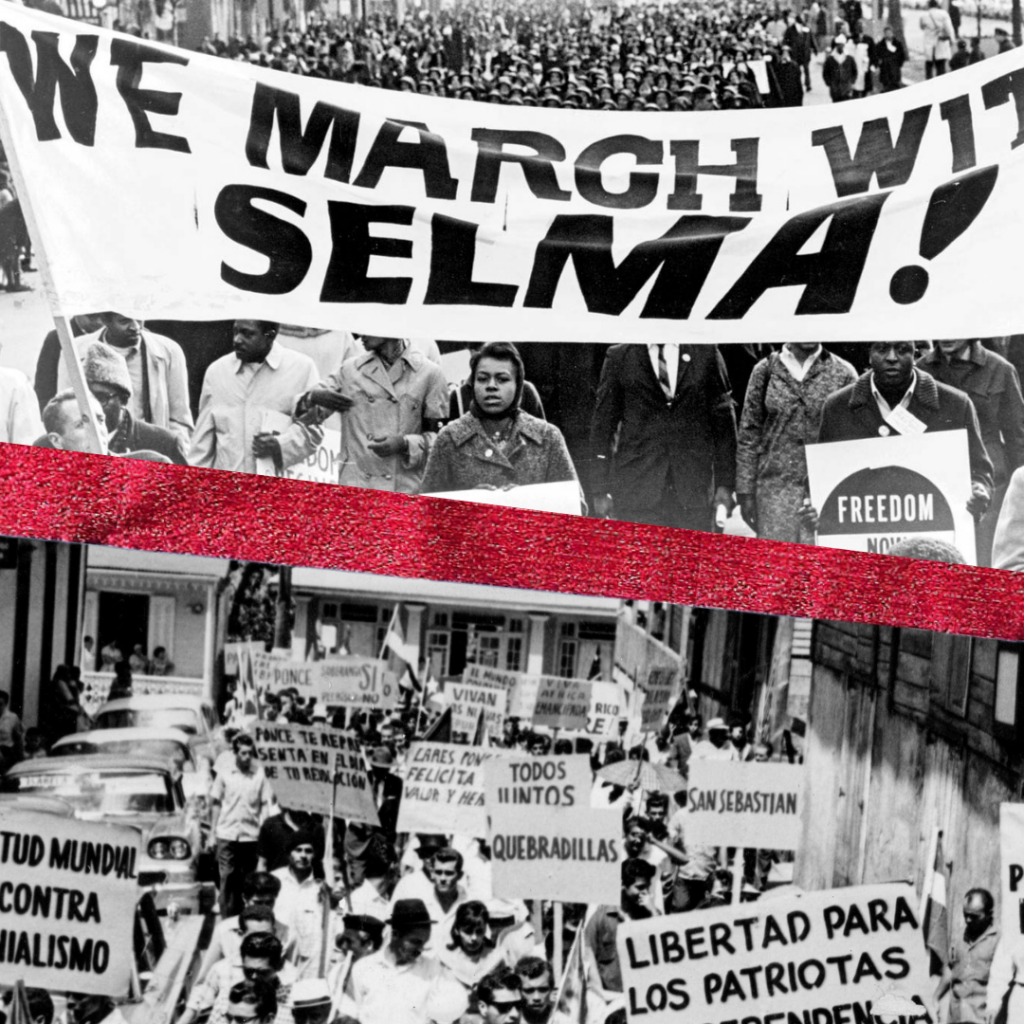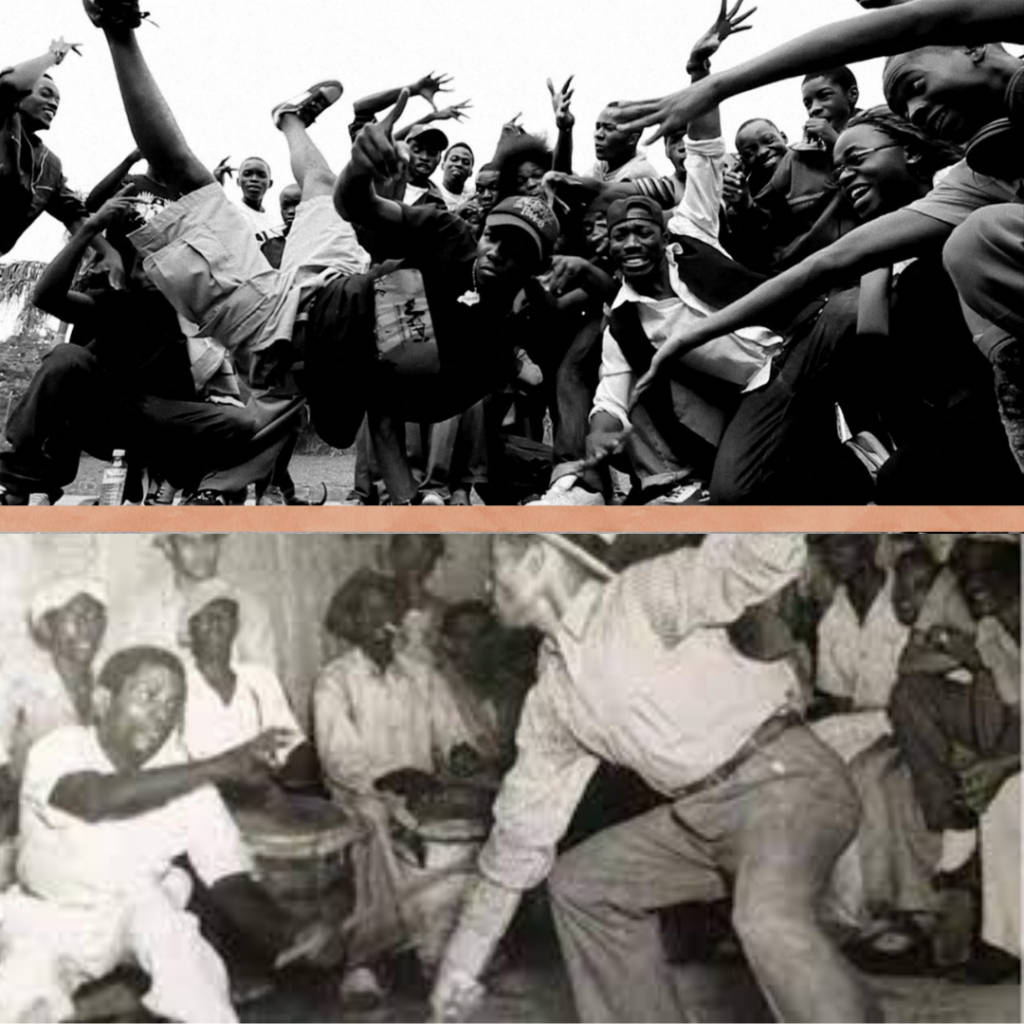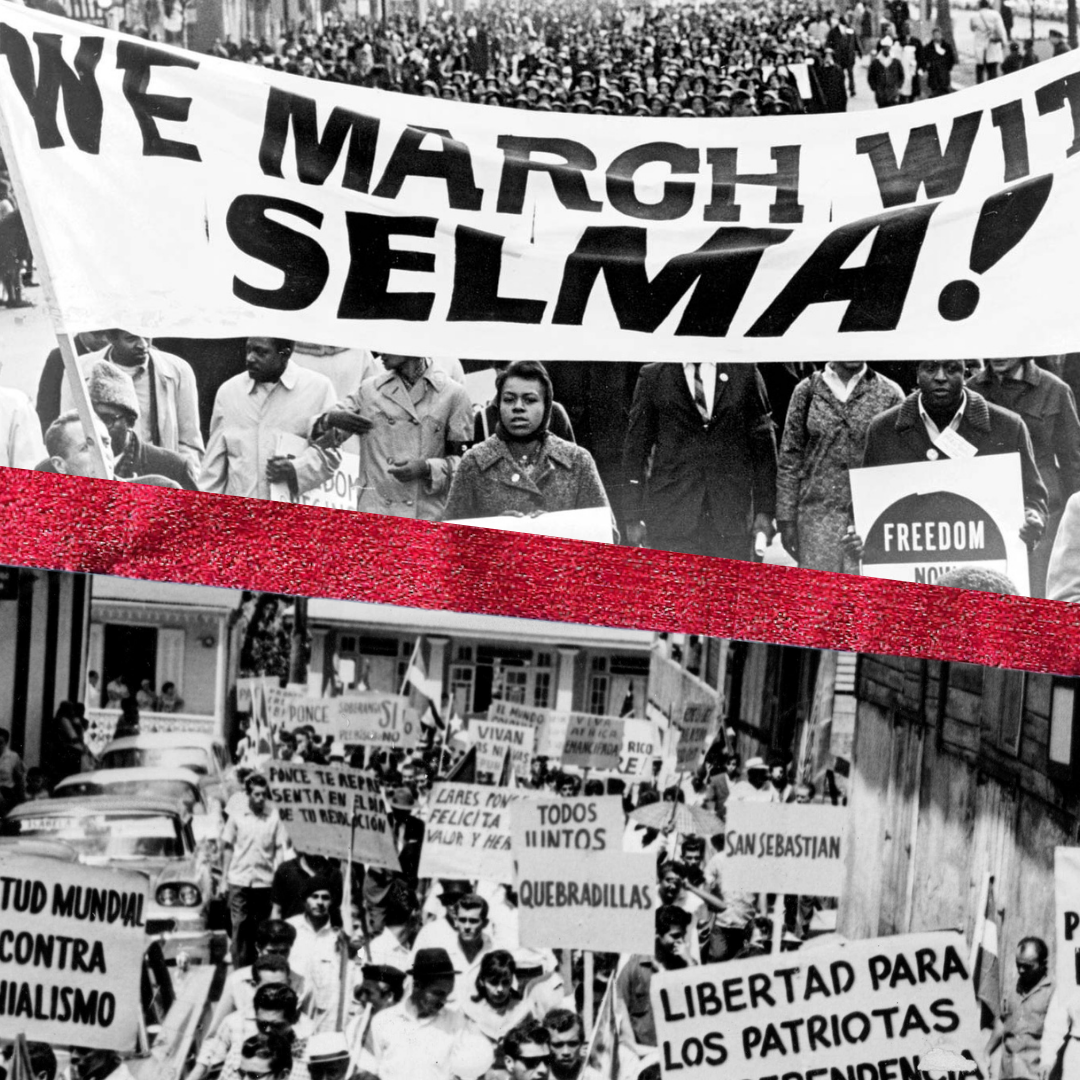African Americans and Latinos are the two largest minorities in the United States. Historically, both communities have been oppressed and marginalized through legislature, social stigmas, and systemic racism. This page explores the similarities in these two communities’ struggles and how they’ve expressed them through music.
Historic Struggles in the African American Community
African Americans have been oppressed since the start of colonialism in the United States. From 1526, the year in which the first African slaves were brought to South Carolina, to 1863, the year slavery was outlawed in the United States, people of African descent were subject to horrendous treatment as slaves and indentured servants. Even after the Emancipation Proclamation went into effect and slaves were freed across the country, African Americans were treated as second-class citizens. They were prevented from voting through intimidation tactics, coordinated attacks on the voting population, and unfair voting requirements such as fees and literary tests. Furthermore, African Americans in the South were subject to segregation under the infamous “Jim Crow” laws, which allowed for separate facilities for whites and blacks. After desegregation in 1954, African Americans were still subject to discrimination in the South due to lingering racial tensions. Life became even harder for African Americans after the “War on Drugs” was declared by President Richard Nixon. This nationwide effort to criminalize and eradicate recreational drugs resulted in thousands of African-Americans being incarcerated, an issue that still persists today (Smith, 2010).

Historic Struggles in the Latino Community
With increased immigration to the U.S. from Central and South American countries, tensions began to rise between immigrants and whites as the former joined the workforce. As more immigrants found work in the United States, they began rallying under unions to gain rights as workers. Organizations also began working towards civil rights, fair wages, and more opportunities for education for Latinos. Presently, the largest issue the Latino community faces is immigration. Contrary to popular belief, crossing into the United States is no easy task. Acquiring the paperwork to cross the border legally takes both time and money many families don’t have. Crossing illegally is extremely dangerous, and once in the United States immigrants face the threat of deportation, separation of families, and discrimination (Carrillo, 2020).
Musical Expression in the African American Community
Music has been an integral part of the African American community from the times of slavery until today. Oftentimes, African slaves working on the same plantation came from different tribes and spoke different dialects. They would then use music to overcome this language barrier, leading to more unity within the slave population. Hymns and spiritual songs became more common as the English literacy rate rose within the African American community. Some of these songs became so well known they are still considered classics today. These songs were based on the suffering slaves felt, and focused on the hope of being free one day, whether it was in this life or in the next (Library of Congress).
Beginning in the 1970’s, hip-hop began evolving as a music genre among African-Americans in the Bronx. The lyrics of hip-hop and rap songs are often violent and graphic, describing discrimination, substance abuse, and containing high-risk messages (Dressman, 2017). At the core of these songs, however, is a message of survival and strength. If you look beyond the profanity and phrases that confront the status quo, you find voices calling out for justice, equality, and peace in the African-American community (Crooke, 2017).
The song Bomba by 116 is a perfect example of this. Throughout the song, the artists don’t shy away from speaking about negative confrontations with law enforcement, the lack of justice for those killed by police officers, and the hypocrisy of those who call themselves allies while doing nothing to alleviate the situation. The tone of the song is angry, resentful, and accusatory, which would make any listener turn away if they’re not prepared to dive into the deeper meanings of the song.
“400 years the put us in chains
Now we got the keys”
Bomba, 116
The song draws attention to some of the issues the African-American community faces, but it’s also meant to do so much more than that. It is meant to be a proclamation of freedom, of a new wave of resistance against the oppression the community has felt for centuries. This resistance won’t follow the peaceful expectations that are often pushed on the community. Instead, it will be loud and proud and will follow its own beat until the justice that has been denied to this community is served (116- Bomba, 2020, 2:35-48).
Musical Expression in the Latino Community
Many music styles typically associated with Latino culture have similar origins to African-American styles. Bomba, which originated in Puerto Rico, is one of the oldest music styles from the Caribbean dating back to 1797. It served as a form of communication between slaves from different tribes and was used as an emotional outlet, in weddings, and even during rebellions. Beyond its African roots, it was also influenced by the strong Native American and Spanish presence on the island. Eventually, this music style developed into a “call-and-response” used to tell stories of the people’s day-to-day life and to tell news to the community (Lugo Morales, 2019). Bomba on the island has not deviated much from its cultural roots. On an international scale, however, Bomba has been merged into other genres, much like in the song described above (Gilbert, 2005).
In the song, the artists use drums and rhythms native to Bomba to create a blend of music styles that reflects the diverse influences already found in Bomba. The song also stays true to Bomba’s cultural roots by serving as a way for both Latinos and African Americans to communicate a single message despite the differences these two communities have. Not only that but the fact that the lyrics focus on the daily struggles of both communities is also akin to the original purpose of Bomba. Lastly, the central message of the song, a new declaration of freedom and fervent and visible pride in your ethnicity is a headliner the artists want everyone to know, and a signal fire of rebellion perfect for the use of Bomba (116- Bomba, 2020, 2:35-48).
Another important aspect the artists in this song touch upon is the intersectionality of their ethnicities. At no point in the song is a clear distinction made between the African-American artist and the Latino artist. Instead, they both list their roots at once, with adjectives such as “Black,” “Latino,” “Spanish,” “Taino (native),” and “African” all finding a home within the same verse (116- Bomba, 2020, 00:40-50). This hints at a subliminal message that, unlike other cultures that also express themselves and their struggles through music, African-Americans and Latinos share a common ancestry and a common ground they could build on if they took that chance.

“Que retumbe la timba
La plena y la bomba
Que como bomba estalle la esperanza
De esta reforma en contra del monopolio
Y todas sus normas
Que buscan controlarnos y manejarnos a su forma
¡Bomba!”
Bomba, 116 2020
Conclusion
After examining the musical expression of both the African-American and Latino communities, it is evident there are more similarities than one may predict. The origins of music styles native to both communities, such as Hip-Hop and Bomba, find their roots in their historical struggles against slavery and oppression. Both were used as a bridge between tribes and as tools against cruel masters, while also serving as a breath of fresh air and an emotional outlet on the darkest days. Now, thanks to increased immigration and cultural diffusion, these two communities are merging in new ways. The sharing of music and collaborations between artists in a way that stays true to the original intent of each music style while complimenting the other is a testament to that. The question is, how else can these two communities come together? Would a thorough coalition of these communities produce a movement as inspiring, world-shaking, and cohesive as this song, Bomba? Or would a coalition only lead to more tension and division between the two communities? It may seem like the issues these two communities face are too different for them to come together effectively, but it is evident that African Americans and Latinos share a common ground simply waiting to be built upon in order to advance social justice for both groups.
So, What Next?
The purpose of this project was to explore a cultural product. From this song, it is evident that the African American and Latino cultures have produced similar feelings of resistance, oppression, individuality, and a refusal to conform to the status quo. It is worth exploring what factors pushed these two seemingly separate cultures in such similar directions. Both cultures have been marginalized for centuries. Both cultures have been oppressed, shut into boxes, and pushed to the side in a way that has inhibited the growth and development of their communities. Was this set in motion by the same, more powerful entities? If so, do their issues have the same solution? These are all questions that could lead to the founding of a powerful alliance. Before this can happen, however, the members of both of these communities must begin to see each other not as enemies or competition, but as neighbors, brothers, and sisters. They must see themselves as allies.
Hence, this blog post. Instead of writing a long paper with a more elevated vocabulary, I published a blog post that is much more accessible to the members of these communities. It is written in a language meant to be understood when read the first time, rather than be analyzed for a deeper meaning. All of this is in the hope my words can reach the African American and Latino Communities, and I can inspire them to see a future they may not have imagined before.
Sources
Dressman, M., Ilawole, Y. A Cultural Crescendo: The Black Origins of American Music. (2017, March 24). https://thehoya.com/songs-of-struggle-and-spirit/
Carrillo, K. J. (2020, Sep. 18). How the Chicano Movement Championed Mexican-American Identity. HISTORY. Retrieved April 26, 2021, from https://www.history.com/news/chicano-movement
Crooke, A., & Jr, R. T. (2017, July 27). The healing power of hip hop. The Conversation. Retrieved April 26, 2021, from http://theconversation.com/the-healing-power-of-hip-hop-81556
Gilbert, A. (2005, July 29). Berkeley: Bay Area Puerto Ricans bring bomba to La Peña. Sfgate.Com. Retrieved April 26, 2021, from https://www.sfgate.com/bayarea/article/Berkeley-Bay-Area-Puerto-Ricans-bring-bomba-to-2651891.php
Lugo Morale, O. (2019). Bomba [General Content]. https://library.si.edu/education/traveling-trunks/latinx/bomba
Reach Records. (2020, October 23). 116—Bomba feat. Practiko, Derek Minor. https://www.youtube.com/watch?v=RIkjMIXqfvI
Smith, J. C. (2010). Encyclopedia of African American Popular Culture [4 volumes].
ABC-CLIO. Spirituals | Ritual and Worship | Musical Styles | Articles and Essays | The Library of Congress Celebrates the Songs of America | Digital Collections | Library of Congress. (n.d.). [Web page]. Library of Congress, Washington, D.C. 20540 USA. Retrieved April 26, 2021, from https://www.loc.gov/collections/songs-of-america/articles-and-essays/musical-styles/ritual-and-worship/spirituals
